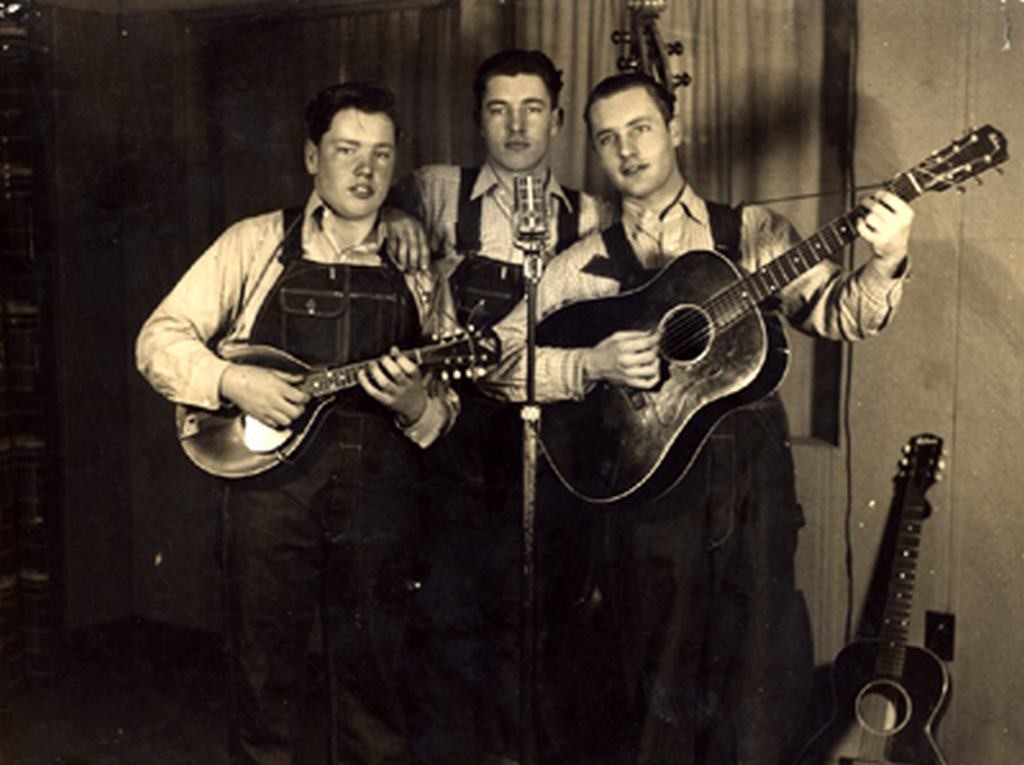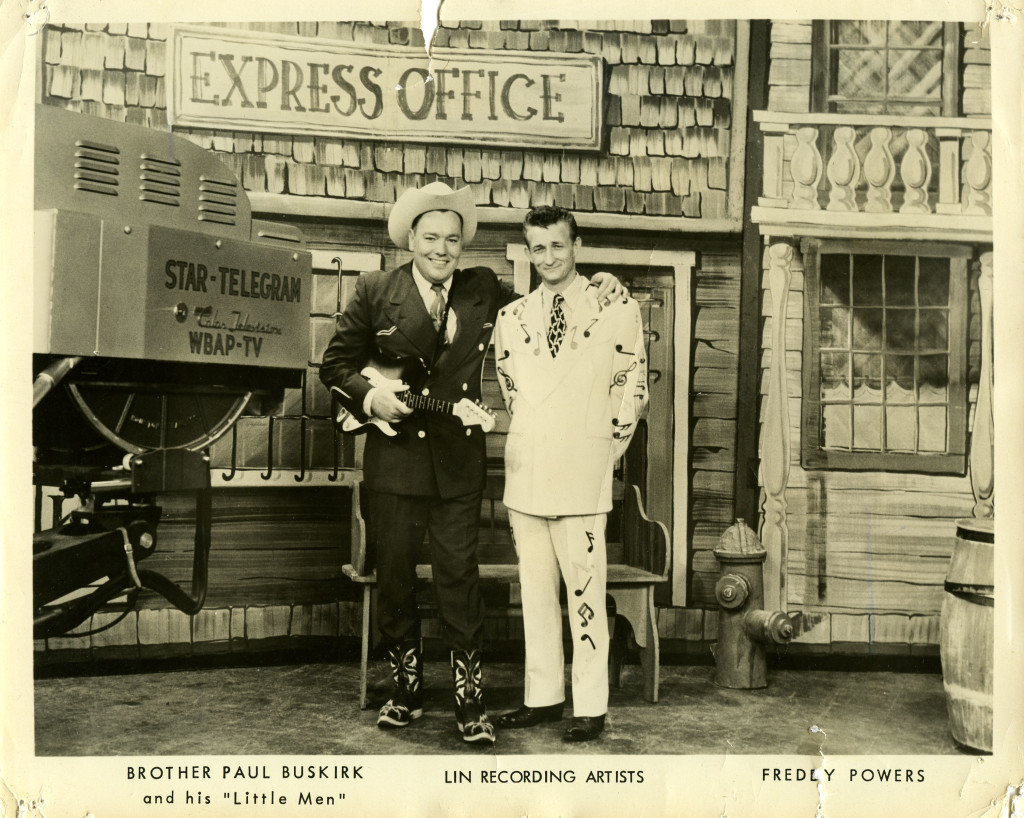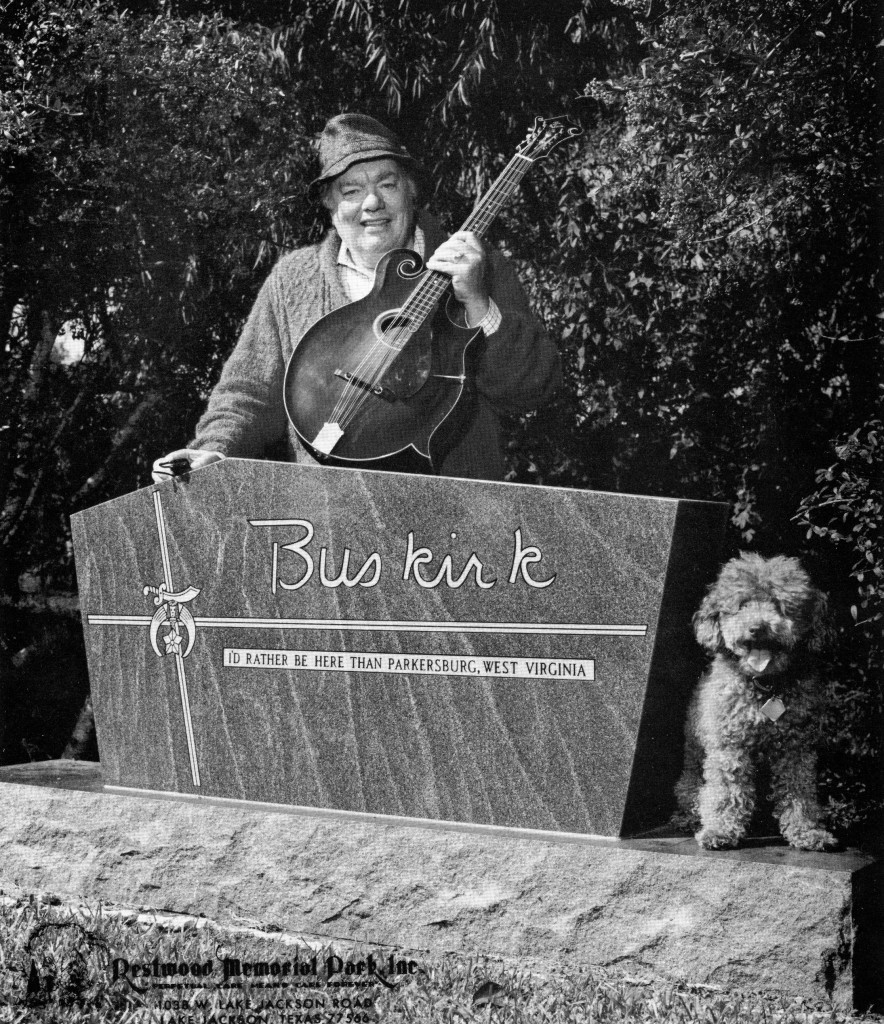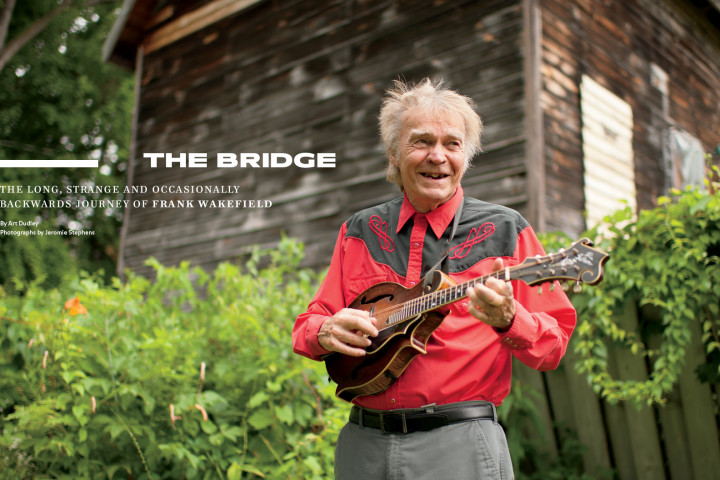“Paul Buskirk was one of the greatest natural musicians I have ever known.” -Chet Atkins
“I knew Chet Atkins when he only knew three songs!” -Paul Buskirk
Austin in the early ’70s was about as cool as it got for a kid being raised by a Cherokee-Irish single teenage mother who was going to the University of Texas. I’d run out from a fine evening meal of ever-stout government issued cheese and catch lightning bugs to my wild soul’s content. I’d crush them underfoot and moonlight on the worn walkway with the other welfare kids, and marvel at how the phosphorescent streaks would linger, seemingly long past their Darwinesque shelf dates.
Later in life, having seen a few things and hardly as innocent, I realized that every once in a while a musician─or human for that matter─I’d randomly cross paths with was as rare and equally fleeting as those magical lightning bugs. Legendary mandolinist and Willie Nelson confidante Paul Buskirk was long gone before I arrived on the Houston scene, but his light was still there, as strong as could be. Nothing like a 78 year run in the lights to solidify a man’s status.
I stepped out of the 1972 Cadillac and looked out on the small cemetery. Red Wing boots on dry gravel. Only a few minutes East of Nacogdoches, Huey and I seemed to be in the middle of nowhere. We’d driven up on a whim to see his friend’s grave, and to enjoy the Texas highways for a while. Huey was a classic vintage Texan I’d befriended years ago under the guise of guitar craftsman and repairman. I’d left for Florida 12 years before and took up with a band. I’d also became an assignment writer for high-brow surf magazines by chasing waves in remote locales all over the world — but I never forgot the stunning setup he did on an old blonde Gibson J-200 flattop acoustic guitar that still held true over a decade later.
I’d foolishly bailed the ocean back to the Lone Star State for a girl, and certainly I did miss Texas somethin’ fierce, but without waves, I wasn’t sure how I would fare. I asked my father about falling for this girl and moving, and he simply said, “You take a good woman where you find her.” Agreed, and there’d be fine barbecue on the plate again, within striking distance of Mexico’s Pacific to live in the truck and surf, and thus back to the world’s finest music scene, and of course the fact that Texas people are second to none. Did I say second to none? Well, I meant it.
On Sundays, Huey and I would hide out in his work shed after he’d cooked homegrown breakfasts of buttermilk griddle cakes, coarse black-peppered sausage patties, and Jalapeno-flecked brown farm eggs. The shed was actually a roomy workshop in back, where all sorts of woodworking machines resided, and also at that time, a 100 year-old piece of flamed maple we were building a neck out of for a Stratocaster. Huey had survived Vietnam seemingly intact, married his high school sweetheart, and along the way taught himself to build amazing instruments for characters like Billy Gibbons, the quintessential genius Texas guitar slinger and bullshit artist, and also Mark May, another talented Houston blues man, among others. We’d been working on the hand-crafted guitar for over a year, and with time, stories would trickle out of Huey, often about a musician named Paul Buskirk.
Paul grew up with a typically poverty-stricken family in the Western Virginia Mountains, and would often walk out to catch the bus with no shoes. As if a fortuitous conduit from above, he was given a mandolin, but without strings. Eventually the 50 cents for a pack was secured, and little Paul went to work, often by playing along with the radio. “You guys all say I am a natural musician, well, yes, I am, but I also practiced twelve hours a fucking day!” once said Paul lovingly to Huey. So he burned the midnight oil, literally, by taking an old lamp into the barn and sitting up with the mandolin from gloaming onwards. His family was soon intertwined with a traveling medicine show, so Paul was plucked out of proper schooling at the ripe age of 11, and they hit the road to play music together. When I was 11 the biggest even in my life was staring at Wonder Woman’s buxom weekly television show, so even this remarkable tidbit had me asking Huey to tell me more.
I decided to finally set aside a few months to study Paul, see if I could unravel what his life as an artist was about, and learn a few things of my own. I had no idea each road I turned down would lead to more infamous characters sharing their unbridled zeal for the man as a world-class musician, let alone the wild and rowdy stories not fit for this magazine. But maybe someday they too will come out in a lengthier body of work. The only way to really dig in and uncover it all (not possible) was to actually take some major drives and meet up with people, and so it went.
I headed the truck out to Willie Nelson’s ranch, an easy drive from Austin along wildflower-laden dusty roads and minute canyon walls. When I arrived, I had to gently meander my way through a pack of deer hanging out on the road. I cracked a couple marijuana jokes to the deer and mumbled something about the munchies, and all for personal use, but got no laughs from them. Willie was certainly integral to this story, but I’d come looking for Freddy powers this time. Freddy was an amazing musician himself, who had toured with Merle Haggard as a rhythm guitarist for years, co-produced, played, and sang on Willie and Paul’s Somewhere Over the Rainbow album, and one time even had three number one hits he’d penned on the air at the same time. Freddy was struggling with Parkinson’s disease, and now had a charity foundation in his name which was often supported by such names as Big & Rich, Merle and Willie himself. Freddy’s couch was as comfortable as any I’ve ever sat on, and he had plenty to shed light on.
“Paul was a wonderful friend of mine! My first paying job was with him. He was such a father figure to me. We played Europe and Vegas together, my gosh, son. I knew him so well. He was even the one who introduced me to marijuana, hahaha! Paul was hardnosed when it came to music. He was a serious player, and a serious musician!
“We met in Dallas in the 1950s. I had just gotten out of the service and was there to become a barber. Paul drove a big ol’ white Buick. I would sing extra loud by the window and Paul heard me one day, came to talk to me. He hired me and things moved fast from there. We started doing a noon day Jones show in 1955. It was a news/weather show. Neil Jones was the emcee and Paul was the sidekick.
“Later we started doing the Pat Boone Show around 1955/56. We played service clubs and officers clubs in Europe. We had a show with three banjos, three vocalists, and a tuba. Paul had a gypsy wagon built on wheels with a stage and lights in the 1960’s. We would pull up on a Saturday afternoon to places like furniture store parking lots and Paul would sweet talk the owners into letting us play. We made good money! Paul was never a honky-tonk player. He was so far advanced and beyond us, he was like a professor of music, and he got better with age!”
“Here’s a funny story for ya’, One time a young guy came up to him at the National DJ Convention Festival in the Nashville in the 1950s and said, “Paul Buskirk, the greatest mandolinist in the world.” Paul remarked, “The only one in the world!” That was Elvis. Elvis had a WSM corn cob pipe and was surrounded by girls, by the way. Willie was a standup DJ when they met. With all absolutely due respect, Paul could eat Bill Monroe alive. Buskirk was from a different mold. If I hadn’t met him, there’s no telling which direction I’d have gone.”
On the drive home I thought about Bill Monroe, whose amazing work I had studied myself. Many different players told me the same thing. Monroe was a legend and visionary, but thankfully to all of us and history, dedicated to bluegrass, and there was no finer, never will be. Just ask Peter Rowan. Buskirk turned out to be some sort of Django of the mandola and banjo, with a serious and unfathomable deep understanding of music to boot. The main truth I kept working off was that back in the day, Willie Nelson was a clean cut disc-jockey who, among other things, was into Lefty Frizzell recordings, and hearing that Paul was playing on them, brought him in for an interview.
From there, Paul took Willie under his wing and convinced him to teach lessons for him at a music store he’d opened in Pasadena, Texas. Paul taught Willie himself, and kept him one lesson ahead of the students. They became fast friends, and at times, when Willie was short of cash, he’d sell Paul a song or two over lunch for almost nothing, to make ends meet. One of those songs was, “Family Bible,” which apparently Paul bought for a whopping 50 bucks. Another even more famous one was “Night Life!” which Willie sold to him for 100 bucks, hence all the Willie connections. This would all come full circle years later.
Next stop was steel guitar player Herb Remington, who I found still in Houston. Herb is actually in 15 different music halls of fame! He had played on numerous albums with Paul, so I knew he was worth checking into. Remington played piano from the age of five on, and found the pedal steel in high school. After World War II, he found himself in Bob Wills’ band, and the rest is Western Swing history. Herb wrote “Remington Ride,” which is a famous must play tune for those steel players who can tote the note. He also played for Merle Haggard in the ’70s.
“I arrived here in Houston around 1950. Paul came here in 1960 or so. He came to work for KPRC channel 2, who had a weekly country music show in the evening. After that show went kaput, he played on several of my recordings on the D label in the ’60s and ’70s and played with my Hawaiian group. We started playing pizza joints in the late 1960s and ’70s. Back in those days, pizza joints had entertainment. Paul had a music store in Pasadena, Texas for a while, but he gave away most of the equipment to friends!”
“Willie came along and sold Paul “Family Bible.” Willie used him on a lot of gigs and a lot of movies. Willie never forgot a friend. Paul also worked with Horace Heights and His Musical Knights in the 1940s. Paul was always very proud he worked with Gene Austin. Paul was as funny as the devil and we had some great times together. Paul could play so fast you know. I even once got a letter from Australia asking who the guitarist was! He was so wonderful; you can’t even imagine how great he was. He played over EVERYBODY’S head. He was the best.
“Paul didn’t like to be told what to do, he was a very independent man and not a fan of authority. I once made him wear an all white outfit, so he wore red socks. He loved controversy and lived to be different. He almost went home over refusing to wear those socks. I finally let him play the gig with ‘em. I used the name Herbert Leroy when I played on some of his albums because I was under contract. Paul was an egotist in his own way, but he was on a plane above the rest of the world. His jokes were just fantastic, but it was all in the delivery. He only insulted those who needed it! Those kinds of people should never die, but they do.”
Remington’s wistful comments led me to fiddler and mandolinist Clyde Brewer, who was born in Luling, Texas and was raised in Beaumont His stepfather was Shelly Lee Alley, a pioneer of Western Swing music. Clyde has played with virtually every large band and big-name musician throughout Texas. He has been inducted into various Halls of Fame, including The Western Swing Society Hall of Fame, The Texas Western Swing Hall of Fame, the Golden Spike Country Music Hall of Fame in Utah, the Pioneers of Western Swing Hall of Fame in Seattle, Washington, and the Western Swing Music Society of the Southwest Hall of Fame in Oklahoma City. In 2000, he was inducted into the International Country Music Hall of Fame. He was also just recently awarded the Heart of Western Swing Award at the Quitman, Texas Heritage Foundation of 2008.
“Magnolia Gardens was the name of a country western place that opened up in 1949 on the San Jacinto River in Texas. We played there often, but the clientele was not beautiful, if you know what I mean? Ha ha! I played with him on an album called “Paul Buskirk Plays a Dozen Strings”, on Melba records. I also played in his trio at pizza parlors for a long time. Heck, we were even in a movie called “Tomboy and the Champ” and we also did the soundtrack. I am pretty sure we sang the song “Love Valley,” or Jerry Neil did, which was written by Willie and was his first recording. Willie, Paul, and I had a radio show on KPRC in 1962.”
“Paul had so many great one liners. He was the most professional musician I ever met and I’ve been playing for 63 years. He gave every single song his all, no matter what song it was. Here’s a funny quickie on Paul. A dad once brought his son into the music store to learn rock & roll and Paul told him he refused to teach any music that had an IQ of zero! He lost that customer. And another…
“Sometimes people would rush up to the bandstand and ask him to play such and such a song. Paul would say, ‘No, but I’ll play something with the same notes just for you!’ He was an absolute original, you know.”
Thinking of how swing had evolved over the years, I decided to track down Ray Benson in Austin and see if there was some possible Buskirk connection, and true to form, Benson did not disappoint. Ray Benson co-founded Asleep at the Wheel in Paw Paw, West Virginia in 1969, and numerous Grammy’s later, we all know that tale.
“I think the world of his playing. His talent was undeniable. Paul played the 4-string mandola, which was unique and most unusual. His combination of country and jazz gave birth to all of us. You must realize this. He held a mastery of the stringed instrument in so many different genres. And I mean A MASTER. That sharp one one signature turnaround change was the one he taught Willie….listen to “Blue Eyes Crying in the Rain”. Willie used that thing on every song. That right there is the genesis of Willie Nelson.”
“Paul was the grandfather of the Houston scene in the 1950s or so, and Houston was a hotbed of musicians back then. Paul even inspired Ray Price. All this turned into country music but they were all jazz musicians. He was one of the greats.”
At this point, I’d pretty much realized Buskirk was as brilliant as they come. I knew he had played with Homer and Jethro and had earned great respect from them, and thus wondered, could he have possibly met up with Grisman or influenced him at some point? Sure enough, the Dawg himself fired right back at me with a story of his own. “Paul Buskirk is certainly one of the unsung heroes of the mandolin. His playing was legendary and widely admired by all of his peers, including Jethro Burns and Tiny Moore. I met Paul only one time, in the lobby of a hotel in Houston, Texas. I was on my way to a sound check for a show and he was on his way to a gig in the hotel (private wedding). Unfortunately for me we never got to pick together, but it was great to meet him even though he was carrying a tenor banjo case!”
A few weeks later, out for a morning surf with a friend of mine who owned a music store, I figured what the heck, I’d ask even him. Bart Wittrock is a veteran musician and owner of Houston guitar shop Rockin’ Robins, and he let rip by describing a night decades ago he ended up at a club in Bellaire, Texas with his wife. “We walked in there and I thought I was Mr. Cool bluesman, too cool to hear some jazz or bluegrass or whatever. Up on the stage I noticed a banjo and a tenor guitar and almost ran for the door. It was Paul Buskirk. That night I knew I was witnessing one of the greatest musicians I’d ever see in my life, and still know that today. We stayed the entire two sets, and I hate banjo. That man was amazing.”
I also learned that in the waning years, Willie got together with Paul to record a few albums and help him earn a living, most notable of which were “Somewhere over the Rainbow” and “Nacogdoches Waltz.” Buskirk took the earnings and built a home there, his first and only permanent one, and to this day a gold-plated plaque remains out front that says, “The House That Willie Built.” I’d hauled the truck out yet again and stopped at Buskirk’s old house to meet up with Dana Woods, whose Encore Recording Studio was used for the albums.
“Paul was the most amazing musician I’ve ever met, and I’ve been around studios and musicians my entire life. He played Vaudeville style which was these rapid fire rolls which even Paul’s admitted no one else in the world could do. I studied music in college even, and not a single one of my professors combined knew one/tenth what Paul knew as far as theory. He was the first player to break out of that Monroe mold, and branched out into Gypsy Jazz, orchestral, hoe-downs, just damn near anything. I swear it sounded like three players at once, and that’s what everyone said.”
As with any human, especially a complex and multi-talented artist, some stories will come out of the woodwork that shows another side of the life and its toll. Chet Atkins was a fan, friend and musical peer. A few people told me about the time Chet had booked a small orchestra to record Paul and his mandolin, but Paul showed up with a banjo, and was lit pretty hard from some sort of ale. Needless to say Chet was not pleased. He walked Paul out front to converse with him and asked, “Paul, what am I gonna do with you?” “Paul replied, “Just hit the record button and let me get to it.” After which Chet argued that a banjo could not play along with an orchestra. Paul went in and blew the roof off, and the album came out later, titled, Banjo, But Beautiful!
One more classic sidebar arrived when Deke Dickerson came through town. He was a big Buskirk fan himself, so he contacted Huey to ask a few questions. Huey ended up giving Deke Paul’s Harvey double neck, that had been mauled over the years and had badly twisted necks, since with all the repair work yet to be done it would be years before this one was restored. Deke was thrilled, effusively thankful, and has already since gotten the guitar closer to being up and running. He chimed in as well.
“With Jimmy Bryant now almost a household name, it’s a crime that his Texas counterpart Paul Buskirk is almost completely unknown. Buskirk was one of the hottest stringed instrument players to ever hold a pick, absolutely blazing on mandolin, banjo, guitar, fiddle─anything with strings. In Houston and vicinity, he was a legend, but outside of the Southeastern Texas area few realize how advanced he was.”
“I’d like to say that Paul Buskirk is an influence on my playing but I can’t say that’s true. His playing is so fast, clean, and precise, that it literally scares me, and I tend to stay away from anything that might be construed as me trying to copy Paul Buskirk. He was a master.”
“For years I wondered what happened to his Harvey double neck, the Bigsby-influenced instrument that graced the cover of his album Paul Buskirk Plays a Dozen Strings. Imagine my surprise when I wound up being given the guitar by Huey. He entrusted the guitar to me, because it was in very bad shape and he said he knew that I was the one who would restore it properly, play it and use it, and bring respect and attention to the name of Paul Buskirk. That’s a huge responsibility, but I plan on doing just that. Besides, I’m hoping there’s still some talent left on those fretboards that might rub off on me.”
By the time summer was wrapping up, Huey had made it through open heart surgery and I’d survived my own painful ordeals, and was back solo again in a hip old bungalow from 1910, writing, making music, chasing waves, and fathering a wonderful son on my own. Life was damn good. The old Stratocaster we’d started was close to being finished, as was the Buskirk tale. I even discovered “Night Life” had been recorded by Aretha Franklin and Pat Boone, which Paul still owned the rights to along with “Family Bible”.
So few people ever speak of Buskirk, but when I sought out the true legends and great players, all roads led to him, without fail. Buskirk had played the Opry many times, and also often shared the stage in support of country greats like Roy Acuff, Lefty Frizzell, Kitty Wells, Willie Nelson, Chet Atkins, The Louvin Brothers, Eddy Arnold and Ray Price along the road. In 2002, Buskirk died at age 78 in Nacogdoches, after a long bout with both diabetes and heart disease. He was feisty and playing hard to the finish, damn straight.
Huey is legally in charge of the estate, which still today uses every cent of the income from publishing to give yearly scholarships to “string musicians of promise” at Stephen F. Austin College. The grave that Huey and I had traveled to see back in the fall now held a greater significance than I had ever imagined, and my integral hope with this long journey seemingly finished is that more would come to know Buskirk for the legend and incomparable musician he surely was, and that also, a few reader’s tales would emerge from these. My gawd, it wouldn’t surprise me the least.
This article originally appeared in the Fretboard Journal #14.





